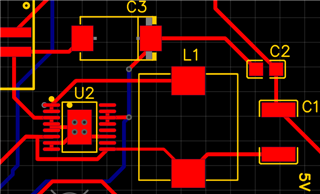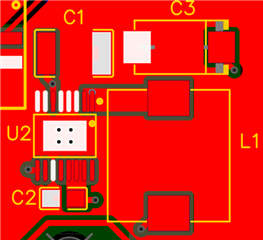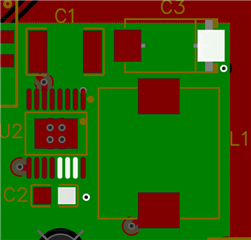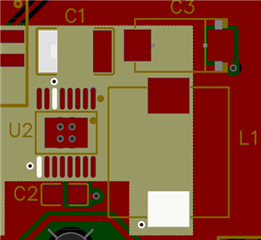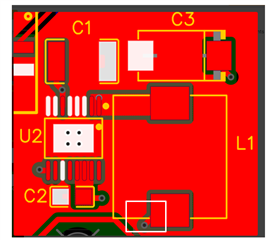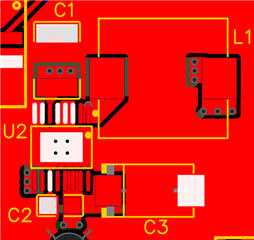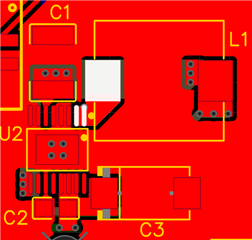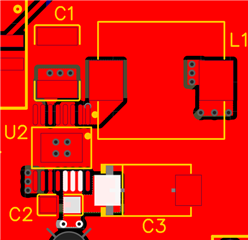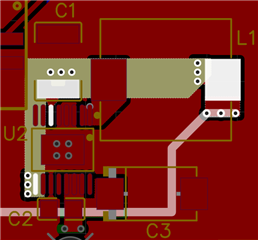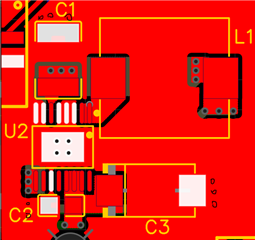Hello,
I am using boost converter TPS61032 in my circuit, but I find that after applying 3.7v from a lithium battery to its input, it immediately burns out and shorts the entire circuit. I am following the recommended design on its datasheet with the following values: L1= 6.8uH, C1=10uF, C2=2.2uF and C3=220uF (tantalum).
I read in other threads that the PCB layout its important when using this component, and I am wondering if it could be that some of them are too far from the IC. I don't understand how this could be causing a whole short circuit though. My tracks are 0.4mm wide.
This is the layout pertaining the TPS61032.
Thanks
